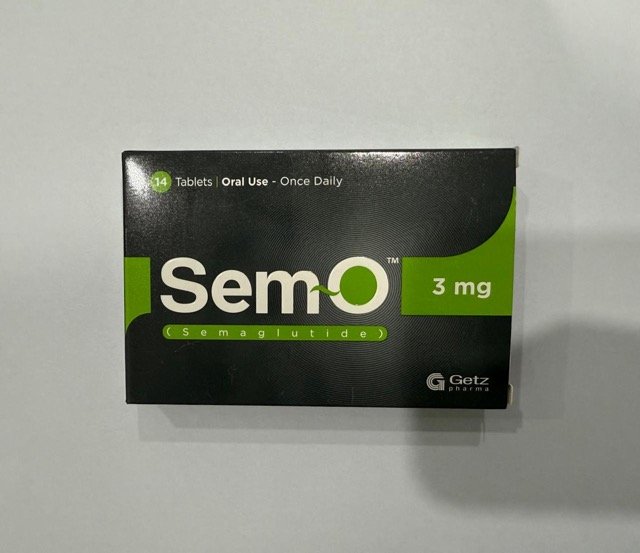Angiotensin receptor blockers like Diovan or Valsartan are recommended for treating the following conditions:
-
Heart failure (NYHA Class II to IV).
- In order to lower mortality in patients with heart failure and a low ejection fraction who are unable to use ACE inhibitors, the American College of Cardiology/AHA advises the use of ARBs.
-
Hypertension: ACE inhibitors and ARBs like Diovan (valsartan) may be preferred for the management of hypertension in patients who have
- Diabetes,
- Stable chronic kidney disease,
- as a combination therapy in stage 2 hypertension or
- those with ASCVD risk of more than 10%.
-
Left ventricular dysfunction or failure after MI:
- In individuals with reduced left ventricular function or heart failure following myocardial infarction, valsartan is related with a decreased risk of cardiovascular death.
-
In order to stop cardiovascular events in individuals with acute coronary syndrome, it is also applied (off-label).
Valsartan (Diovan) Dose in Adults
Diovan (Valsartan) dosage:
-
Dose in Hypertension:
- Oral solution: 40 to 80 mg twice daily, with a daily maximum of 320 mg divided into two doses.
- Tablet: up to 320 mg per day in doses of 80 or 160 mg once day.
-
Dose in Heart failure:
- 20–40 mg twice every day.
- To a maximum of 320 mg per day, titrate the dose in increments of 40 mg twice daily.
-
Dose in Left ventricular dysfunction or failure after MI:
- Twice daily, 20 mg. The dosage can be increased by 20 mg twice daily, up to a maximum of 160 mg twice daily, at weekly intervals.
Valsartan (Diovan) Dose in Children
Valsartan for Hypertension in children and adolescents:
Start your treatment with an oral solution or tablet that contains 0.65 mg/kg to 1.3 mg/kg twice day, up to a maximum of 1.35 mg/kg to 2.7 mg/kg once per day, or 160 mg per day.
Pregnancy Risk Factor D
- [Warning for US Boxes] Similar to other medications that affect the RAAS system, Diovan can harm or even kill a developing foetus.
- Once pregnancy has been identified, it needs to end right away.
- Drugs that affect the RAAS system can cause oligohydramnios, which can lead to skeletal deformities or hypoplastic foetal lungs.
- Hypotension, anuria and skull hypoplasia may occur in infants/neonates.
- Exchange transfusions may be necessary for infants who are exposed in utero.
- The second and third trimesters are when most complications occur in neonates.
Diovan (Valsartan) use during breastfeeding
- It is unclear if Diovan can pass into breast milk.
- Valsartan's advantages in breast milk should be considered by the practitioner.
Valsartan (Diovan) dose in Renal disease:
-
Patients with a CrCl of 30 mL/minute or more:
- No dose adjustment required.
-
CrCl of 30 mL/minute or less:
- Use with caution. Monitor for rising creatinine levels. The manufacturer has not recommended any dosage adjustment in severe renal disease.
Diovan dose in liver disease:
-
Patients with mild to moderate hepatic impairment:
- No dose adjustment required.
-
In severe hepatic impairment (Child class C):
- Use with caution. The manufacturer has not recommended any dose adjustment in severe hepatic impairment.
Common side effects of Diovan (valsartan):
-
Central nervous system:
- Dizziness and hypertension
-
Renal:
- Increased BUN
Less common side effects of Valsartan:
-
Cardiovascular:
- Hypotension,
- orthostatic hypotension, and
- syncope.
-
Central nervous system:
- Fatigue,
- orthostatic dizziness,
- headache, and
- vertigo
-
Endocrine & metabolic:
- Hyperkalemia
-
Gastrointestinal:
- Diarrhea,
- abdominal pain, and
- nausea
-
Hematologic & oncologic:
- Neutropenia
-
Infection:
- Viral infection
-
Neuromuscular & skeletal:
- Arthralgia,
- back pain
-
Ophthalmic:
- Blurred vision
-
Renal:
- Increased serum creatinine and
- renal insufficiency
-
Respiratory:
- Dry cough
Contraindications to Diovan (Valsartan) include:
- Severe allergic reactions, whether to valsartan itself or to any component of its formulation
- Concomitant use of direct renin inhibitors - Aliskiren
- Pregnancy
- Breastfeeding
Warnings and Precautions
- Angioedema:
- Angioedema can occur at any stage of treatment.
- Patients who have angioedema that is associated with ACE inhibitors, idiopathic or hereditary may be at greater risk.
- If patients experience swelling in the larynx, glottis or face, it is important to monitor them.
- The drug should be stopped immediately and not restarted.
- Aggressive management of the airway and Intramuscular epinephrine should be part of the resuscitation.
- Hyperkalemia:
- Hyperkalemia is a risk for the following:
- Patients with impaired renal function
- Diabetes mellitus
- Use potassium-sparing diuretics in conjunction
- Patients taking potassium-containing or potassium-supplementing salts.
- Hypotension:
- Hypotension is a risk factor for patients who are salt- and volume-depleted (e.g. Patients taking high-dose diuretics.
- The patient must be well hydrated before initiating treatment.
- Renal function deterioration:
- Patients with heart disease and renal artery constriction may experience acute renal impairment and patients with poor renal blood flow, for example.
- If there is a marked decline in renal function, therapy should be stopped.
- Cirrhosis can cause ascites:
- Patients with cirrhosis should not be given Diovan as they may experience rapid decline in their renal function.
- Pregnancy:[US Boxed Warning]
- If the drug is administered to pregnant women, it may cause the death of the foetus or severe damage to the foetus.
- You should stop using it as soon as you are sure that your pregnancy has been confirmed.
- Patients undergoing surgery:
- With the induction or maintenance of general anesthesia, intraoperative hypotension can occur.
Valsartan: Drug Interaction
|
Alfuzosin |
The hypotensive effects of blood pressure-lowering medications may be strengthened. |
|
Amphetamines |
May lessen the effectiveness of antihypertensive agents. |
|
Angiotensin II |
The therapeutic benefit of angiotensin II may be reduced by receptor blockers. |
|
Antipsychotic Agents (Second Generation [Atypical]) |
Antipsychotic drugs' hypotensive effects may be enhanced by blood pressure-lowering medications (Second Generation [Atypical]). |
|
Barbiturates |
The hypotensive effects of blood pressure-lowering medications may be strengthened. |
|
Benperidol |
The hypotensive effects of blood pressure-lowering medications may be strengthened. |
|
Brigatinib |
May lessen the effectiveness of antihypertensive agents. Antihypertensive Agents' bradycardic action may be strengthened by brutinib. |
|
Brimonidine (Topical) |
The hypotensive effects of blood pressure-lowering medications may be strengthened. |
|
Canagliflozin |
Angiotensin II Receptor Blockers' hyperkalemic impact might be strengthened. The hypotensive effects of angiotensin II receptor blockers may be strengthened by canagliflozin. |
|
CycloSPORINE (Systemic) |
CycloSPORINE's hyperkalemic impact may be enhanced by angiotensin II receptor blockers (Systemic). |
|
Dapoxetine |
Angiotensin II Receptor Blockers' orthostatic hypotensive action might be improved. |
|
Dexmethylphenidate |
May lessen the effectiveness of antihypertensive agents. |
|
Diazoxide |
The hypotensive effects of blood pressure-lowering medications may be strengthened. |
|
Drospirenone |
Drospirenone's hyperkalemic impact may be enhanced by angiotensin II receptor blockers. |
|
DULoxetine |
The hypotensive impact of DULoxetine may be enhanced by blood pressure lowering medications. |
|
Eltrombopag |
OATP1B1/SLCO1B1 Substrates serum concentration can rise. |
|
Eplerenone |
Angiotensin II Receptor Blockers' hyperkalemic impact might be strengthened. |
|
Gemfibrozil |
OATP1B1/SLCO1B1 Substrates serum concentration can rise. Agents indicated as exceptions should be examined in separate drug interaction monographs. |
|
Heparin |
Angiotensin II Receptor Blockers' hyperkalemic impact might be strengthened. |
|
Heparins (Low Molecular Weight) |
Angiotensin II Receptor Blockers' hyperkalemic impact might be strengthened. |
|
Herbs (Hypertensive Properties) |
May lessen the effectiveness of antihypertensive agents. |
|
Herbs (Hypotensive Properties) |
The hypotensive effects of blood pressure-lowering medications may be strengthened. |
|
HydroCHLOROthiazide |
May intensify Valsartan's hypotensive effects. The serum concentration of HydroCHLOROthiazide may rise in response to Valsartan. |
|
Hypotension-Associated Agents |
The hypotensive action of hypotension-associated agents may be strengthened by blood pressure lowering medications. |
|
Levodopa-Containing Products |
Levodopa-Containing Products' hypotensive effects may be strengthened by blood pressure-lowering medications. |
|
Lormetazepam |
The hypotensive effects of blood pressure-lowering medications may be strengthened. |
|
Methylphenidate |
May lessen the effectiveness of antihypertensive agents. |
|
Molsidomine |
The hypotensive effects of blood pressure-lowering medications may be strengthened. |
|
Naftopidil |
The hypotensive effects of blood pressure-lowering medications may be strengthened. |
|
Nicergoline |
The hypotensive effects of blood pressure-lowering medications may be strengthened. |
|
Nicorandil |
Angiotensin II Receptor Blockers' hyperkalemic impact might be strengthened. |
|
Nicorandil |
The hypotensive effects of blood pressure-lowering medications may be strengthened. |
|
Nitroprusside |
Nitroprusside's hypotensive impact may be strengthened by blood pressure-lowering medications. |
|
Nonsteroidal Anti-Inflammatory Agents |
Nonsteroidal Anti-Inflammatory Agents' negative/toxic effects may be amplified by angiotensin II receptor blockers. In particular, the combination may cause a marked decline in renal function. Angiotensin II Receptor Blockers' therapeutic impact may be lessened by non-steroidal anti-inflammatory drugs. Both glomerular filtration rate and renal function may be significantly reduced by the combination of these two drugs. |
|
Pentoxifylline |
The hypotensive effects of blood pressure-lowering medications may be strengthened. |
|
Pholcodine |
Pholcodine's hypotensive impact may be strengthened by blood pressure lowering medications. |
|
Phosphodiesterase 5 Inhibitors |
The hypotensive effects of blood pressure-lowering medications may be strengthened. |
|
Potassium Salts |
Angiotensin II Receptor Blockers' hyperkalemic impact might be strengthened. |
|
Potassium-Sparing Diuretics |
Potassium-Sparing Diuretics may have a stronger hyperkalemic impact when used with Angiotensin II Receptor Blockers. |
|
Prostacyclin Analogues |
The hypotensive effects of blood pressure-lowering medications may be strengthened. |
|
Quinagolide |
The hypotensive effects of blood pressure-lowering medications may be strengthened. |
|
Teriflunomide |
OATP1B1/SLCO1B1 Substrates serum concentration can rise. |
|
Trimethoprim |
Angiotensin II Receptor Blockers' hyperkalemic impact might be strengthened. |
|
Yohimbine |
May lessen the effectiveness of antihypertensive agents. |
|
Risk Factor D (Consider therapy modification) |
|
|
Aliskiren |
Angiotensin II Receptor Blockers' hyperkalemic impact might be strengthened. The hypotensive effects of angiotensin II receptor blockers may be strengthened by aliskiren. Angiotensin II Receptor Blockers' nephrotoxic effects may be made worse by aliskiren. Treatment: It is not advised for diabetic patients to take aliskiren along with ACEIs or ARBs. Combination therapy should be avoided in other patients, especially when CrCl is less than 60 mL/min. If combined, keep a close eye on your blood pressure, potassium, and creatinine levels. |
|
Amifostine |
Amifostine's hypotensive impact may be strengthened by blood pressure lowering medications. Treatment: Blood pressure-lowering drugs need to be avoided for 24 hours before amifostine is administered when used at chemotherapeutic doses. Amifostine should not be given if blood pressure lowering treatment cannot be stopped. |
|
Angiotensin-Converting Enzyme Inhibitors |
Angiotensin II Receptor Blockers may make angiotensin-converting enzyme inhibitors more harmful or toxic. Angiotensin-Converting Enzyme Inhibitors' serum levels may rise in response to angiotensin II receptor blockers. Management: According to US labelling, it is not advisable to take telmisartan and ramipril. It is unclear whether another ACE inhibitor and ARB combo would be any safer. When possible, take into account alternatives to the mix. |
|
Antihepaciviral Combination Products |
Could raise the serum level of valsartan. Management: If these drugs are used in combination, take into account lowering the valsartan dose and monitoring for signs of hypotension and deteriorating renal function, according to the US prescribing instructions for antihepaciviral combination products. |
|
Lithium |
It's possible that angiotensin II receptor blockers will raise the level of lithium in the blood. Management: After adding an angiotensin II receptor antagonist, it will probably be necessary to lower the dosage of lithium. |
|
Obinutuzumab |
The hypotensive effects of blood pressure-lowering medications may be strengthened. Management: Take into account temporarily stopping blood pressure-lowering drugs 12 hours before the start of the obinutuzumab infusion and keeping them off until 1 hour after the infusion is finished. |
|
Sodium Phosphates |
Angiotensin II Receptor Blockers may make sodium phosphates more nephrotoxic. In particular, there may be an increased risk of acute phosphate nephropathy. Treatment: You might want to temporarily stop taking ARBs or look into alternatives to the oral sodium phosphate bowel preparation in order to prevent this combo. Maintaining appropriate hydration and properly monitoring renal function should be done if the combination cannot be avoided. |
|
Tolvaptan |
OATP1B1/SLCO1B1 Substrates serum concentration can rise. |
|
Risk Factor X (Avoid combination) |
|
|
Bromperidol |
The hypotensive impact of bromperidol may be enhanced by blood pressure lowering medications. Blood Pressure Lowering Agents' hypotensive effects may be lessened by bromperidol. |
Monitor:
Monitor Blood pressure before and after the start of therapy, electrolytes, and renal functions. The dose should be adjusted to achieve the target blood pressure of:
- Less than 130/80 mmHg in hypertensive patients with known cardiovascular disease or a 10-year ASCVD risk of more than 10%
- Less than 130/80 mmHg may be reasonable in hypertensive patients without markers of ASCVD risk.
Blood Pressure Targets in Diabetes patients (ADA 2018 recommendations):
-
Less than 140/90 in patients with co-morbid diabetes and hypertension and age less than 65 years
-
Less than 130/80 in patients less than 65 years of age with diabetes and at high risk of cardiovascular disease.
-
Less than 140/90 mmHg in patients older than 65 years of age with Diabetes.
-
Less than 150/90 mmHg in patients older than 65 years of age with Diabetes and poor health status.
Diovan for heart failure:
- 1 - 2 weeks after the initiation of therapy, check the blood pressure (both lying and standing - postural drop), renal functions, and serum potassium levels.
How to administer:
- Valsartan (Diovan) may be taken with or without food.
Mechanism of action of Valsartan (Diovan):
Valsartan (Diovan), is a direct antagonist of the angiotensin-2 receptors. Inhibition of angiotensin II's binding to its receptors can be done by blocking it.
The following mechanisms can be used to lower blood pressure:
- Vasodilation
- Inhibition of aldosterone production
- Catecholamine inhibition
- Blocking the release of arginine vasopressin
- Hypertrophic and water intake can be inhibited.
Diovan blocks angiotensin 2 in a more effective manner than ACE inhibitors.
The onset of action is around 2 hours
Duration of action is 24 hours It is 95%
Protein bound (primarily to albumin)
Bioavailability ranges from 10 to 35%
Half-life elimination is 4 - 5 hours.
Time to peak plasma concentrations is 2 - 4 hours which is reduced by a high-fat and a high-calorie diet.
Excretion is primarily via feces (83%).
International brands of Valsartan:
- Adwivalsar
- Anginet
- Arbiten
- Arovan
- Balsartec-160
- Balsartec-80
- Bespres
- Cardival
- Cardovaldon
- Diokor
- Diopass
- Dioten
- Diotens
- Diovan
- Diovane
- Diqvan
- Disartan
- Disys
- Dizantin
- Exvan
- Hapresval
- Hiperval
- Hyvalor
- Idisartan
- Kovan
- Maxdio
- Nisis
- Provas
- Rusartin 80
- Starval
- Sui Yue
- Tabuvan
- Tareg
- Torval
- Valazyd
- Valcap
- Valcard
- Valeza
- Valor
- Valosartan
- Valsaone
- Valsar
- Valsarect
- Valt
- Valtan
- Valtensin
- Valvex
- Varcor
- Vasar
- Vasblock
- Vector
Valsartan Brands in Pakistan:
|
Valsartan [Tabs 40 mg] |
|
| NUVAL | PHARMEVO (PVT) LTD. |
| VALTEC | TABROS PHARMA |
|
Valsartan [Tabs 80 mg] |
|
| ANGIOTAN | EFROZE CHEMICAL INDUSTRIES (PVT) LTD. |
| DIAVAL | ETHICAL LABORATORIES (PVT) LTD. |
| DIOTAN 3H | HAMAZ PHARMACEUTICAL (PVT) LTD. |
| DIOVAN | NOVARTIS PHARMA (PAK) LTD |
| LISTAN | LEXICON PHARMACEUTICALS (PVT) LTD. |
| NUVAL | PHARMEVO (PVT) LTD. |
| SOFVASC-V | WILSONS PHARMACEUTICALS |
| VALID | SCILIFE PHARMA (PRIVATE) LTD |
| VALKEN | KANEL PHARMACEUTICALS |
| VALSTAR | CONSOLIDATED CHEMICAL LABORATORIES (PVT) LTD. |
| VALTAN | ENGLISH PHARMACEUTICALS INDUSTRIES |
| VALTEC | TABROS PHARMA |
| VALTN | KURATIVE PAK (PVT) LTD |
| VARLAN | SIZA INTERNATIONAL (PVT) LTD. |
| VATIN | EVEREST PHARMACEUTICALS |
|
Valsartan [Tabs 160 mg] |
|
| ALEVIA | ATCO LABORATORIES LIMITED |
| ANGIOTAN | EFROZE CHEMICAL INDUSTRIES (PVT) LTD. |
| DIAVAL | ETHICAL LABORATORIES (PVT) LTD. |
| DIOVAN | NOVARTIS PHARMA (PAK) LTD |
| LISTAN | LEXICON PHARMACEUTICALS (PVT) LTD. |
| NUVAL | PHARMEVO (PVT) LTD. |
| TULURIK | MEDISURE LABORATORIES PAKISTAN (PVT.) LTD. |
| VALID | SCILIFE PHARMA (PRIVATE) LTD |
| VALSTAR | CONSOLIDATED CHEMICAL LABORATORIES (PVT) LTD. |
| VALTAN | ENGLISH PHARMACEUTICALS INDUSTRIES |
| VALTEC | TABROS PHARMA |
| VALTN | KURATIVE PAK (PVT) LTD |
| VATIN | EVEREST PHARMACEUTICALS |
|
Valsartan [Tabs 320 mg] |
|
| ALEVIA | ATCO LABORATORIES LIMITED |
| DIOVAN | NOVARTIS PHARMA (PAK) LTD |



.jpeg)



